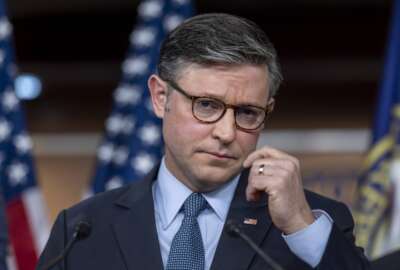GAO: must plan for future of local governments
The state and local sectors are headed for a multi-trillion dollar headache
wfedstaff | June 3, 2015 12:56 pm
State and local governments have been hit hard by the recession. And when they suffer, the federal government often has to get involved. So what can we expect going forward? The Government Accountability Office has just completed a review of the long-term financial health of the local sector.
“GAO for a long time has been talking about the challenges the federal government faces with its fiscal management so we decided that what we’d do is take a complementary look at the state and local sector,” Stan Czerwinski, Director for Strategic Issues at GAO, said.
Based on historical data, the GAO was able to start testing for future fiscal health. The first model were tested two years ago, Czerwinski said, and predicted a recession before there was one.
“Fortunate for us geeks, we had a recession. Unfortunate for the country, we had a recession,” Czerwinski said. “So what we wanted to do was to take the next step then and peel back the onion, and say what’s going on here that’s actually driving the fiscal condition of the state and local structure”
GAO started by reviewing the past.
What we wanted to do was look at both the spending and revenue for the state and local sectors over the past 30 years, and compare them,” Czerwinski said. “The bottom line is, we’ve seen a faster growth in expenditures than we have in the revenue coming in.”
Among the costs that dramatically increased? Health care, which was also driving up costs on the federal level over the same time frame. Health care costs in the state and local sector increased by 8 percent–from 12 percent in 1978 to 20 percent in 2008. The In 1978 12 percent in 2008– 20 percent
“The question then becomes, what’s it crowding out?” Czerwinski said.
Since state and local governments must balance their budgets, Czerwinski explained, so what the increased costs do is put pressure on the system, as opposed to creating debt. And it’s big pressure.
“If we don’t get things changed, we could be looking at approximately $10 trillion on the sector by 50 years out,” Czerwinski said.
And when state and local government go down, it’s the federal government that often is part of helping ease the pressure, or even bailing them out. So finding a solution and planning ahead is everyone’s problem, Czerwinski explained.
“It’s one that we’re really going to have to work together,” Czerwinski said. “When we think about it, it’s going to have to be with the capacity and what the state and local sectors brings to the table in mind.”
You can find a summary of the report here.
Email the author of this post at vjairam@federalnewsradio.com
Copyright © 2025 Federal News Network. All rights reserved. This website is not intended for users located within the European Economic Area.





